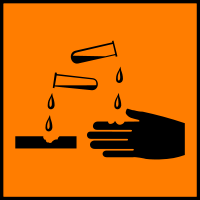|
Linear Formula
|
(CH3)2S·BHCl2
|
|
Density
|
1.255 g/mL at 25 °C(lit.)
|
|
Flash Point
|
24 °C
|
|
Flash Point
|
75.2 °F
|
|
GHS Pictograms
|

|
|
GHS Pictograms
|

|
|
GHS Signal Word
|
Danger
|
|
GHS Hazard statements
|
H226-H314
|
|
European Hazard Symbols
|
 Corrosive (C) Corrosive (C)
|
|
MSDS Link
|
Download
|
|
Personal Protective Equipment
|
Faceshields, full-face respirator (US), Gloves, Goggles, multi-purpose combination respirator cartridge (US), type ABEK (EN14387) respirator filter
|
|
GHS Precautionary statements
|
P280-P305 + P351 + P338-P310
|
|
RID/ADR
|
UN 2920 8/PG 2
|
|
Risk Statements
|
10-14-34
|
|
Safety Statements
|
16-26-36/37/39-45
|
|
Supplemental Hazard Statements
|
Reacts violently with water.
|
|
Hazard Class
|
8
|
|
UN Number
|
2920
|
|
Packing Group
|
2
|
|
German water hazard class
|
3
|